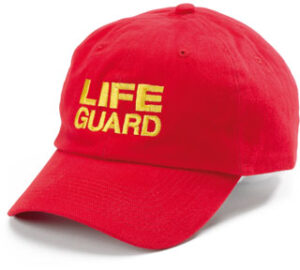Established in 1891, the Royal Life Saving Society (RLSS) is the UK’s leading water safety and drowning prevention agency. Each year approximately 500 people, adults and children drown. Indeed, child drownings are the third most common cause of accidental deaths in children under the age of 14.
The RLSS works hard to reduce this number by providing lifesaving, lifeguarding and water safety and life support skills to people through over 3,000 active lifesaving and lifeguarding clubs and Approved Training Centres throughout the UK and Ireland.
Generating funds to save lives
The charity’s catalogue which is produced by its mail order business unit, RLSS UK Enterprises, has been a crucial revenue generator, helping to fund its work for over 20 years. When planning the 2011 catalogue the RLSS decided to seek external mail order catalogue design expertise. Nicola Rees, RLSS UK Enterprises Ltd Contract Manager, explains: “Our catalogue was working well but we felt it was time to take it to the next level. We wanted to improve the copy and the design but we didn’t want this to be simply a refresh, or a change for change’s sake. We had some tangible important business targets.”
RLSS’s brief was clear; it wanted to increase sales revenue through the catalogue and drive more traffic to its Lifesavers Direct online store. It also wanted to ensure its Lifesaving and Lifeguarding knowledge and expertise are shared through the catalogue and that more people realise that the catalogue profits are gift-aided back to the parent charity. Armed with this brief, Nicola Rees met with several possible agencies before choosing Catalogues 4 Business (C4B). She continues: “We just really liked the company. They were personable and professional and they clearly understood us, our positioning and the nature of our audience. This final point is crucial if you are to convert the audience into a customer.”
The RLSS catalogue goes to lifesaving branches and volunteers, lifeguards, trainer assessors and tutors, training centres and pool and beach operators. “Catalogues 4 Business had some interesting thinking about how to analyse our customers and they impressed with their knowledge and track record within the charity sector,” says Nicola Rees.
“There’s a fine line you tread when you are the commercial arm of a charity – you have a fundraising job to do but you also have a reputation to preserve and volunteers to support, and the former mustn’t compromise the latter. Ian and his team clearly understood how to walk that line.” The catalogue, which is A4 in size and a 52 pager, is distributed at the beginning of the year and so, once appointed in September, C4B had to move quickly. To kick off C4B analysed the catalogue and looked at how key product areas were presented. ‘We focused on driving the benefits of products, not just features.
Foremost in buyers mind is ‘what’s in it for me?’ and this is true of both B2B and B2C.’ said C4B’s MD Ian Simpson ‘with B2B, prospective buyers have to understand what benefits the products will bring and how these benefits can offer tangible solutions; products need to be understood quickly.’
‘By improving eyeflow and exploiting proven reader behaviour, we structured the catalogue in a more logical, sales-driven way.’ Ian continued ‘to sell product, you have to understand how and why it is bought and then recreate this process on the catalogue page. Crucially, a catalogue is both a sales and a marketing tool; it reinforces the brand and its values, and sells its products. This often sadly overlooked and reduces a catalogue’s overall effectiveness.’
… the catalogue is easier to navigate and more powerful as a sales tool…
With a recent study by the charity suggesting that less than 50% of customers realised that profits were gifted back to the charity, Ian suggested creating a stronger strapline and introducing messages that reinforced the work the charity undertakes.
Ian’s team also introduced more engaging, yet still technical, copy into the catalogue – reinforcing RLSS’s expertise without breaking up the ‘buying flow.’ He also suggested more logical product grouping in key areas such as ‘Rookie Lifeguards’ ‘Lifesaving Sport’ and ‘Life Guarding’ including introductions in each area so that the catalogue is easier to navigate and more powerful as a sales tool. They also used more in-situ photography, featuring multiple products being used.
It is early days for the new catalogue, 16,000 have been sent out so far and 35,000 will go out during the course of the year, however the early signs suggest it’s performing well suggesting that the strategy of driving add-on sales through product grouping is working. Also, importantly, feedback from customers is that the ‘charity support’ message is getting through.
Nicola Rees concludes: “We were not looking for a revolution. We wanted this year’s catalogue to be a shift – and a learning experience; an opportunity to test some new thinking and to improve performance gradually. However, we’ve already seen that by having the really professional C4B team work with us, we have got the catalogue on track to bring real results without breaking the bank; in the current climate this is a huge achievement.”